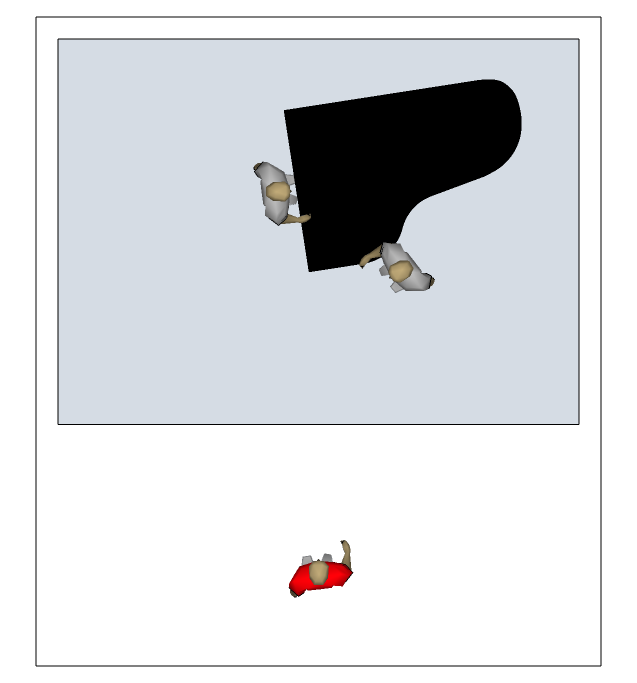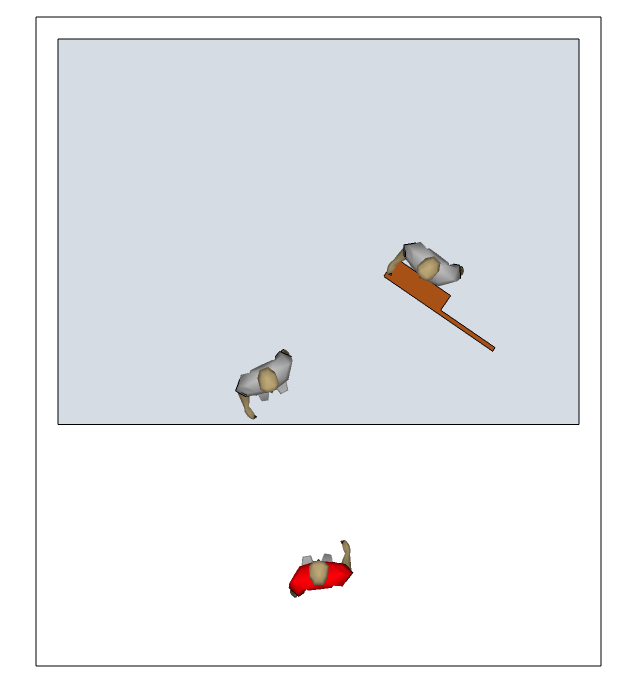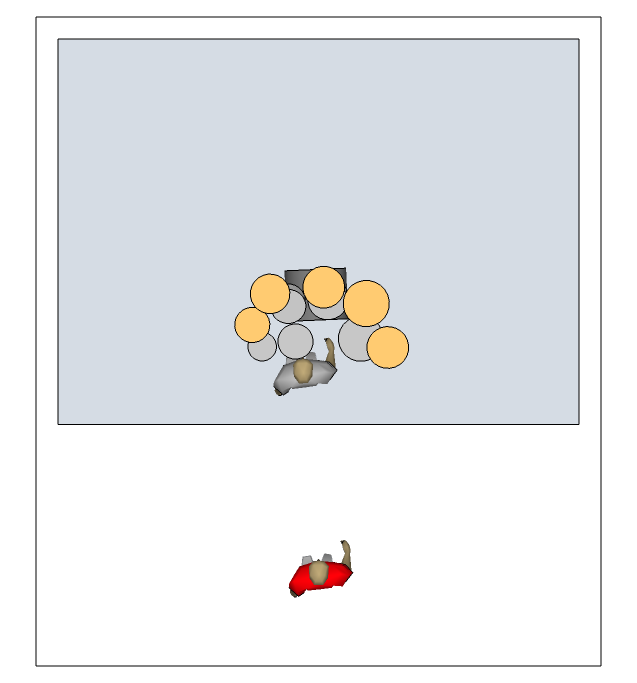|
Posted by Mario Martinez on
08-27-2016
|
|
fiogf49gjkf0d We will be happy to share our music with all GSC members who would be
willing to try the Truthful Recording Technology (calibration v2.0)
sound on their systems. All we want in exchange is to get as much
feedback as possible. It would be great if we could get your
testimonials to include them on our web page.
The purpose of the Truthful Recording Technology is to achieve
transparency (that would be to produce a facsimile image of the actual
concert hall sound). To go about this, we developed a fixed setup. We
only use two mics always placed on the same exact spot of our auditorium
(outside of the stage area). We do not use any mixing or mastering. Our
technology is all about calibrating the hall and the recording chain to
be transparent. The better the calibration, the more transparent the
setup will be.
This is the product of an 8 year research project. The project started
in 2009. By April 1st 2013 we had finished working on the physical side
of things (fixing the problems presented by the acoustic relationships
between hall, stage and pickup point). We then spent the next four years
working on the calibration of the recording chain. We worked on many
different calibrations and developed methods to test and verify the
results. By August 1st 2016 we had reached the transparency point.
I do not think this has ever been tried before (at least not to my
knowledge). This type of project is not commercially viable (we did not
know how long it was going to take or if we were ever going to be able
to complete our project) so I can see why. The good thing is we did get
there, and now that it is done it can be used to record basically
anything always with the same results. From a large piano, to a flamenco
guitar, a drum set or a rock band. I can think of many applications for
this technology but right know we are just trying to let people know
about it.
Here is a link to our page where we explain why we did this:
http://www.playclassics.com/about
And here is a link to our catalogue so you can choose your albums:
http://www.playclassics.com/catalogue
All our recordings are made exactly the same way. The same piano, with
the same tuning, sitting on the same spot of the stage. The hall, the
recording gear and the calibration are the same. In fact the only thing
that is different would be the performer himself. So if you listen to
two recordings of two different pianists you should get a sense of how
those pianists use the same instrument to produce sound in a different
way just like you would if you were to listen to those pianists in a
real concert situation. This is actually an important part of this
Truthful Recording Technology.
So we should all get two albums. The "Albéniz Iberia" by Luis Grané and
one of the other three albums by Cabrera: "Cabrera plays Debussy",
"Chopin Polish Songs" or "Songs of Paolo Tosti".
The Debussy Preludes by Enrique Bernaldo de Quirós was recorded before
we finished building our physical setup. Calibration v2.0 cannot be
applied to that album. That is why I have taken it out of the list.
Just post the albums of your choice and we will send you a Gift Code to
download the full dynamic range 24bit 96kHz Truthful Masters.
|
|
|
|
Posted by Paul S on
08-27-2016
|
|
fiogf49gjkf0d
Mario, I don't know how many "audio" sites you have salted, but I wonder if you read this one before posting your blurb. It is nice that you have spent some time trying to get a natural sound for you recordings via controlling some of the typical variables involved in the recording process. You may have heard of Bob Fine, who tried something similar, many years ago, or of Sheffield Lab, Eastwind, the list goes on. Since I've not bothered investigating your site any more than you've bothered to investigate this one, all I know about what you're doing is what you posted here. From what you have said, the first thoughts that pop into my mind are questions about the actual "content" you offer, in terms of "material" choices and actual performances. For me, if either of these fail to keep my interest, who cares about the recording, let alone "consistency" between performances by different performers playing different music?
Any thoughts on this?
Best regards,
Paul S
|
|
|
|
Posted by Mario Martinez on
08-28-2016
|
|
fiogf49gjkf0d Hi Paul,
thanks for your insights.
Yes, we have published our results in other forums too. That was a great experience. It was a lot of fun being able to share all that with them. 
PlayClassics TRT v2.0 master file giveaway for "Computer Audiophile Forum" members
Nine months ago we started a thread called:
PlayClassics master file giveaway for CA members. The purpose of that
thread was to have CA members try the sound of the Truthful Recording
Technology on their systems. What we shared with you back then was the
most transparent sound we had so far (that was calibration version 1.0).
Up
to that point we had only used our setup with classical music
instruments, but thanks to that thread we started trying new things out.
One of the things we tried was a drums set and a rock band. The
recorded sound of those instruments was not as transparent as we would
have expected. That made us realize there was still some room for
improvement on our calibration. We tried to do some fixes over
calibration v1.0 but that approach did not seem to work. (Here is the
thread where we published those results: PlayClassics Truthful Recording
Technology v1.1)
We then knew we would have to re-calibrate from scratch:
Post #101
I would like to try something new.
I think fixing this minor problems by applying little patches over calibration v1.0 is not going to work.
In
order to get good results we might have to re-calibrate from scratch.
Do not worry, we are not going to change the sound. We are always aiming
at transparency, so even if we do the calibration 100 times we will
always end up at almost the same identical place. But this time, I am
aware of this little problems, so I will try to deal with them from the
beginning.
I might take me a few days, but I will report back as soon as I have something that I am convince of |
|
It
has been 5 months since then, but I think it was all worth it. We have a
new calibration v2.0 that we would like to share with you. |
|
|
|
|
|
Posted by Paul S on
08-28-2016
|
|
fiogf49gjkf0d
Thanks, Mario. This tells me everything I need to know about your offering.
Good Luck.
Best regards,
Paul S
|
|
|
|
Posted by kodomo on
08-29-2016
|
|
fiogf49gjkf0d I would like to hear one of your offers in my system. As someone who has an interest in recording, classical music and piano in particular, I would be happy to try out one. Albeniz performance sounds good, kind of exciting and fresh, definitely a younger pianists interpretation. Please do send me the code for it.
|
|
|
|
Posted by Mario Martinez on
08-29-2016
|
|
fiogf49gjkf0d Hi komodo,
Thanks for listening 
I have been trying to find a way to send you a private message but I do not think that tool is available on this forum. At least I have not found it, so I am posting it to you.
Here is your code for the "Albéniz Iberia" album: komodo11a44934
You can download the master directly from the albums page: http://www.playclassics.com/album4
Regards,
Mario
P.S. Tips for download: do
not use a download manager. Just you regular browser. I would recommend
using a browser that would allow you to resume downloads (Firefox does).
The master files are more than 1Gb so it will take some time for them
to download. If the connection gets interrupted Firefox will allow you
to resume the download right where it stopped so you do not have to
start over again (just go to "Downloads" under the "Tools" menu)
|
|
|
|
Posted by Mario Martinez on
08-30-2016
|
|
fiogf49gjkf0d It might be interesting to listen to some experimental samples. They are
just straight takes we made to see how our technology would work with
different genres.
We have some flamenco (voice and guitar) some drums solos (drums set of
11 pieces)
The piano, the guitar and the drums are probably in opposite sides of
the "good practice recording manual" but we are recording them all the
same way. So I think listening to all these instruments on
the recordings pretty much gives you a feeling of what this technology
is all about.
See if this makes sense:
Say we built a full range instrument designed to PRODUCE the same color
on everyone note. If you allowed that instrument to vibrate freely
(without the constrains of any walls around it) you would be able to
HEAR that same color on every note. (Let's name this sound "A")
Now imagine you take that instrument into a room. The walls on that room
will constrain the way the instrument vibrates. Depending on where on
that room you place the instrument the distances from the different
walls will affect each note in a different way. So the color of the
instrument will not be homogeneous any more. It will now PRODUCE a
slightly different color on every note. (Let's name this sound "B").
If you want to listen to it you will have to place yourself somewhere
within that room. Depending on where on that room you place yourself the
distances from the different walls will deform the sound of each note
in a different way. This color deformation will not be homogeneous. For
each note, you will now HEAR a different color from the one the
instrument produced. (Let's name this sound "C")
But it does not stop there, because you are not listening live, we are
making a recording. So instead of your ears, we are using two
microphones and some gear to record that sound. Depending on your choice
of mics, mic arrangement and gear the recording chain will also deform
the sound. This color deformation will not be homogeneous either. So for
each note, you will RECORD a different color from the one your ears
would have heard. (Let's call this sound "D")
So, what are we doing? Our project is about getting as close to "A" as
possible. We worked the hall to minimize the differences between "A",
"B" and "C". Then we developed a calibration to take care of the rest.
How do we know if we actually got to "A"? We are using our setup to
record voice, piano, guitar and drums (I am taking the rock out of the
list because the bass and the guitar are not acoustic instruments).
These instruments are extremely different from each other. Yet, we are
recording them all the same way. They could have all been recorded on
the same take. The fact that the sound quality is transparent across all
those instruments means we have been successful on achieving our goal
of actually recording that "A" sound (call it "true" sound, "absolute"
sound… you name it)
|
|
|
|
Posted by Mario Martinez on
09-02-2016
|
|
fiogf49gjkf0d We use the same setup for every recording. It does not
matter if it is just piano, or any other chamber music arrangement. We
only use two mics and they are always placed on the same exact spot of
our auditorium outside of the stage area. There is no mixing or
mastering involved, left mic is left speaker and right mic is right
speaker. We have obtained this sound by working the acoustics of the
auditorium itself.
This is an accurate picture of our setup. It might not be pretty, but
the measurements are correct. The person at the bottom of the picture
represents the actual position of the mics (that would be your listening
position). They really are outside of the stage area, and they are
sitting at that same spot for all five albums.

|
|
|
|
Posted by Mario Martinez on
09-02-2016
|
|
fiogf49gjkf0d Here is a sketch of the flamenco recording:

|
|
|
|
Posted by Mario Martinez on
09-02-2016
|
|
fiogf49gjkf0d Here is a sketch of the drums recording:

|
|
|
|
Posted by Mario Martinez on
09-15-2016
|
|
fiogf49gjkf0d Here is an SPL file you can use to calibrate the volume of your system to the volume of the actual performance.
You can download it on any of our regular formats (Master, DVD, CD, MP3)
While playing this file in stereo, adjust the volume of your system until your SPL meter reads 75dB at your listening point.
All our albums are recorded with the
same level, so once you calibrate your playback system you will be
hearing all the recordings at real live level.
Here are the links to the files:
TRTv2.0.master_SPL75dB
TRTv2.0.dvd_SPL75dB
TRTv2.0.cd_SPL75dB
TRTv2.0.mp3_SPL75dB
|
|
|
|
|
|
|
Posted by kodomo on
09-27-2016
|
|
fiogf49gjkf0d Hello Mario,
I enjoyed this calibration file. I like to have a reference like this. I will be getting the 7th album you have released with some Schubert and Lizst music I like. It is nice to see you and your company is trying better yourselves and move forward. I like your approach and enjoy the information you share on recording setups.
|
|